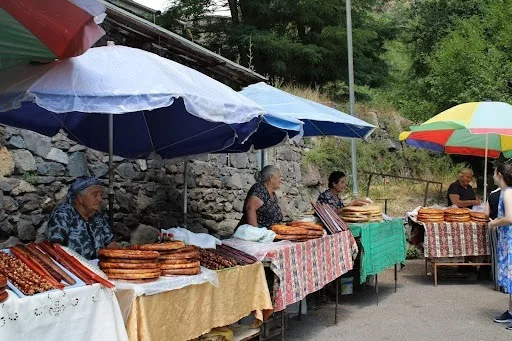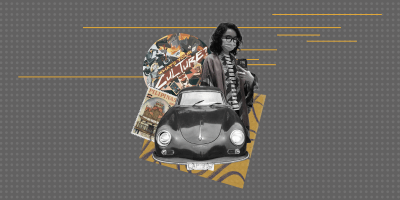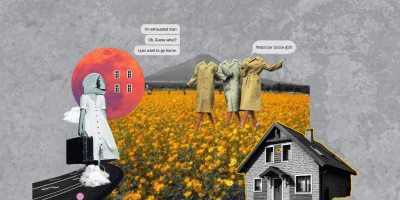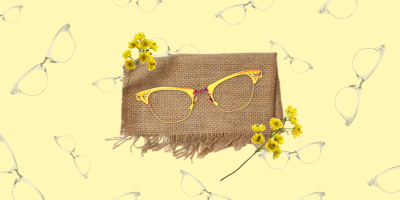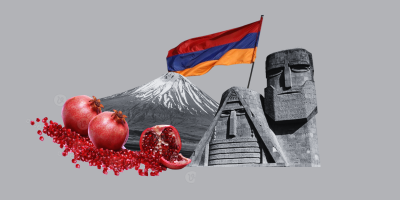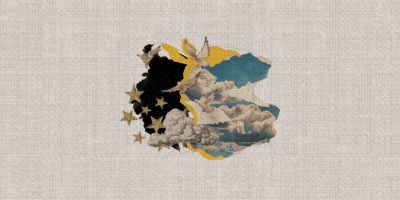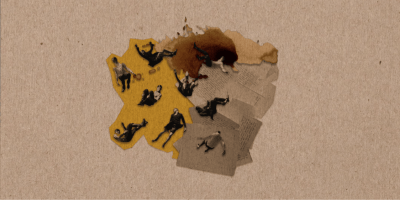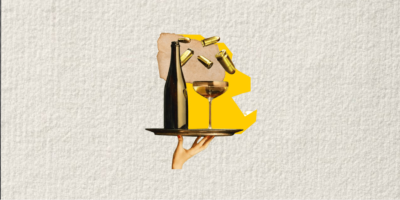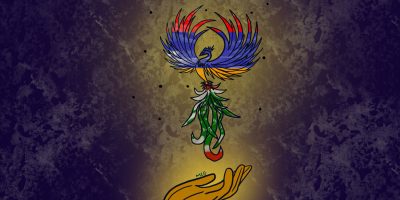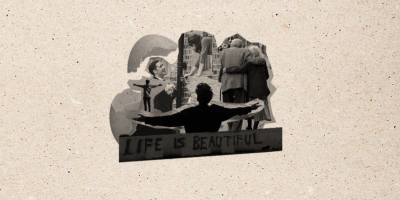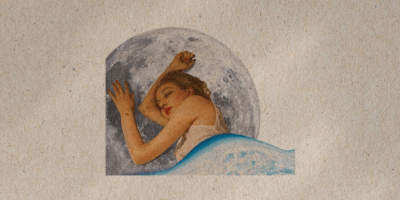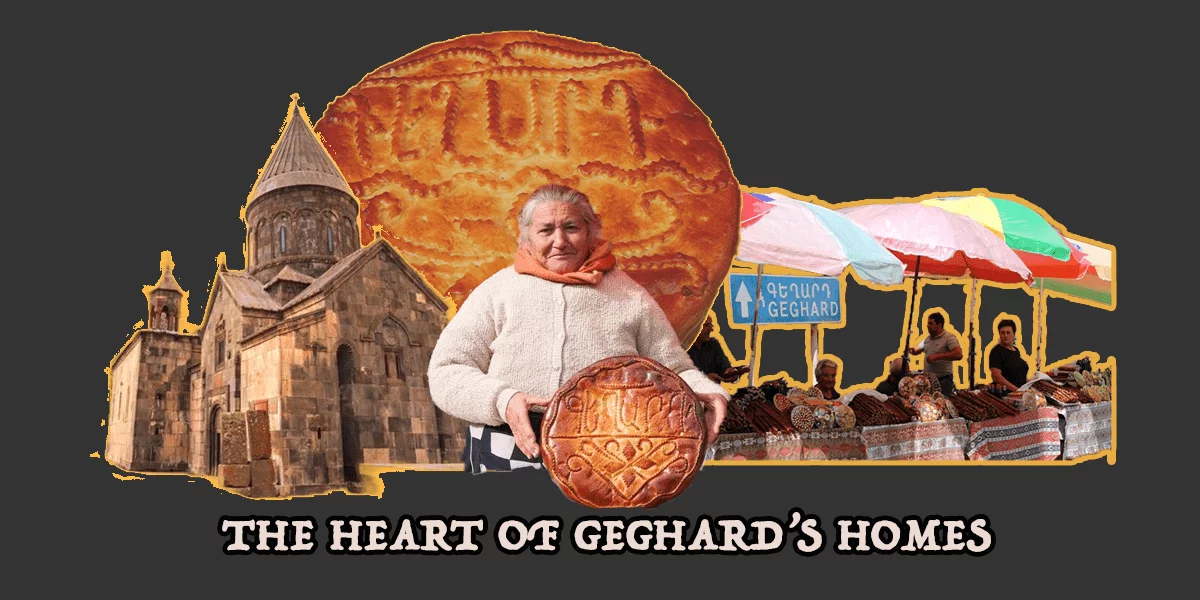
A few weeks ago, my family and I set off to see the Geghard monastery which is about a 40 minutes car ride from Yerevan, Armenia. The UNESCO World Heritage Site, built in 1215, illustrates the very peak of Armenian medieval architecture. The roof of the chapel was under construction, but we got a chance to go inside. And while it is an austere and solid structure that stirs the emotions, there was another attraction in its vicinity, softer in nature, that spoke to our senses. After admiring the monastery’s beauty, we walked all the way to the end of the monastery to commit our sins. We made our way to an open, makeshift market where villagers hawked baked sweets and dried fruits that looked like sheets of purple and orange parchment. We scoured the grounds for homemade sweets like Sharots, Ttu lavash and Gata prepared by the local villagers.
Gata is an Armenian sweet bread often stuffed with walnuts and khoriz. Different towns and regions have their own version of the pastry, each unique, and they differ in shape, size, and decoration. Long ago, Gata was baked in tonirs (an underground oven made of clay, created by Armenians to resemble the setting sun “falling into the ground”), but now according to Nune, a seller, they bake them in modern ovens.
The sweet bread is traditionally eaten during Christian festivities with a cup of tea or coffee. One of the most popular Gatas is the one in Geghard. The filling consists of flour, butter, and sugar, also known as Khoriz. Other Gatas have fillings such as walnuts or other nuts, but in Geghard, Khoriz filled Gatas have a round shape and are decorated before baking.
There is a tradition that includes placing a coin inside the dough of the Gata before baking it, and it is said that whoever receives the piece with the coin in it is to be blessed with good fortune.
“They are selling the best ones over here! Only a few left!” shouted my dad. He was standing at the very corner of the sweets market, far from the crowd, and although there weren’t many people, he always knew how to draw someone’s attention, especially when it came to something that mattered to him.
Standing at the very end of the sweets market was Nune, a sweet lady herself, who reminded me of my grandmother. “This spot is mine. What can I do? I’m always standing here at the very end, and nobody comes to me because I’m so far away. They usually buy their Gatas from the sellers who sit at the beginning of the market,” said Nune as my mother and I looked at her sweets.
“I come here every morning at eight and then go home by nine in the evening. By the time I get home, my son and his wife have already made the dough for our new batch of Gatas and they are waiting for me to check on everything before heating the oven. I wouldn’t be standing here every day without my family,” confessed Nune. Standing in the heat of the summer, with only the shade of umbrellas to protect them, they need to sell their sweets before getting back home to their families. They all work throughout the year, day and night, except in the winters when they stay at home to take care of their cattle.
Despite all the sellers convincing us to buy their Gatas as theirs was the best, my dad insisted on buying only from Nune. “Nobody goes to her. We should only buy from her,” he whispered to me and then proudly continued his loud advertising. I guess Nune really did remind us both of my grandmother.
In the end, we bought three beautifully decorated Gatas from Nune. Some people slowly made their way to her, and the whole market became chaotic by that point. The smile never left Nune’s face while she was putting the Gatas in a plastic bag. I was convinced her smile could light up rooms and hearts.
During the ride back home, my nostrils celebrated the warm scent of sweet dough bellowing from a hot oven. There was something comforting and familiar in that smell. It led one to the heart of Geghard’s homes – ordinary people working hard with their family’s love and support to make a living.

